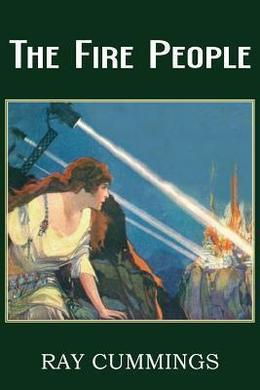
-
EPUB 551 KB
-
Kindle 494 KB
-
Support epubBooks by making a small $2.99 PayPal donation purchase.
Description
The invasion began innocently enough when the meteor crashed to earth. Then a glow began to emanate from the meteor and everything that entered the light was destroyed. The fate of the Earth is now in the hands of Bob Trevor, a newspaperman, Professor Newland, and others. Would the Earth be saved from the invaders from the Mercutian Light and the invaders from Mercury?
269 pages with a reading time of ~4.25 hours (67453 words), and first published in 1922. This DRM-Free edition published by epubBooks, 2015.
Community Reviews
-
Good
Nov 28
Excerpt
The first of the new meteors landed on the earth in November, 1940. It was discovered by a farmer in his field near Brookline, Massachusetts, shortly after daybreak on the morning of the 11th. Astronomically, the event was recorded by the observatory at Harvard as the sudden appearance of what apparently was a new star, increasing in the short space of a few hours from invisibility to a power beyond that of the first magnitude, and then as rapidly fading again to invisibility. This star was recorded by two of the other great North American observatories, and by one in the Argentine Republic. That it was comparatively small in mass and exceedingly close to the earth, even when first discovered, was obvious. All observers agreed that it was a heavenly body of an entirely new order.
The observatory at Harvard supplemented its account by recording the falling, just before dawn of the 11th, of an extraordinarily brilliant meteor that flamed with a curious red and green light as it entered the earth’s atmosphere. This meteor did not burn itself out, but fell, still retaining its luminosity, from a point near the zenith, to the horizon.
What the farmer saw was a huge fire burning near the center of his field. It was circular in form and about thirty feet in diameter. He was astonished to see it there, but what surprised him more was its peculiar aspect.
It was still the twilight of dawn when he reached the field. He beheld the fire first from a point several hundred yards away. As he explained it, the light–for it was more aptly described as a light than a fire–extended in parallel rays from the ground directly upward into the sky. He could see no line of demarkation where it ended at the top. It seemed to extend into the sky an infinite distance. It was, in fact, as though an enormous searchlight were buried in his field, casting its beam of light directly upward.
But more than all this, the farmer was struck by the extraordinary color of the light. At the base it was a deep, solid green. This green color extended upward for perhaps fifty feet, then it shaded into red. The farmer noticed, too, that the fire did not leap and dance with flames, but seemed rather to glow–a steady light like the burning of colored powder. In the morning half-light it threw a weird, unearthly reddish-green glow over the field.
The farmer approached to within twenty feet of the light. He looked to see what was burning, but could not determine, for the greenish base extended directly down into the ground. He noticed also that it gave out extraordinarily little heat. The morning was not exceptionally cold, yet he stood within twenty feet of the fire without discomfort.
I was on the staff of the Boston Observer at this time. I reached Brookline about noon of the 11th of November, and went directly to the field where the fire was burning. Nearly a thousand people were there, watching.
By daylight the fire still held its green and red color, although its light was much less intense. It held its characteristic shape. Though clearly definable, under the rays of the sun it became quite transparent. Looking through it, I could see plainly the crowd of people on the farther side of the field. The effect was similar to looking through a faintly tinted glass, except that now I noticed that the light had a sort of crawling motion, like the particles of a heavy fog. The fire came from a hole in the ground; by daylight now the hole could be seen plainly.
For some moments I stood silent, awestruck by this extraordinary spectacle. Then a man standing beside me remarked that there was no smoke. I had not thought of that before, but it was true–indeed, the fire appeared phosphorescent.
“Let’s get up closer,” said the man beside me.
Together we walked to within ten feet of the outer edge of the fire. We could feel its heat now, although it was not uncomfortable except when it beat directly on our faces. Standing so close, we could see down into the hole from which the light emanated.
Lying at the bottom of the hole, perhaps ten feet below the surface, I saw the jagged top of an enormous gray sphere, burned and pitted. This was the meteor–nearly thirty feet in diameter–that in its fall had buried itself deep in the loam of the field.
As we stood there looking down into the hole some one across from us tossed in a ball of paper. It seemed to hang poised a moment, then it shriveled up, turned black, and floated slowly down until it rested on top of the sphere.
Some one else threw a block of wood about a foot long into the hole. I could see it as it struck the top of the sphere. It lay there an instant; then it, too, turned black and charred, but it did not burst into flame.
The man beside me plucked at my sleeve. “Why don’t it burn?” he asked.
I shook myself loose.
